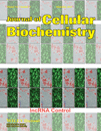 Charcot-Marie-Tooth 1A (CMT1A) is a demyelinating hereditary neuropathy whose pathogenetic mechanisms are still poorly defined and an etiologic treatment is not yet available. An abnormally high intracellular Ca2+ concentration ([Ca2+ ]i ) occurs in Schwann cells from CMT1A rats (CMT1A SC) and is caused by overexpression of the purinoceptor P2 × 7. Normalization of the Ca2+ levels through down-regulation of P2 × 7 appears to restore the normal phenotype of CMT1A SC in vitro. The authors of the current study have recently demonstrated that the diadenosine 5′,5″‘-P1, P2-diphosphate (Ap2A) isomer P18 behaves as an antagonist of the P2 × 7 purinergic receptor, effectively blocking channel opening induced by ATP. In addition, P18 behaves as a P2Y11 agonist, inducing cAMP overproduction in P2Y11-overexpressing cells. Here, the authors investigated the in vitro effects of P18 on CMT1A SC. They observed that basal levels of intracellular cAMP ([cAMP]i ), a known regulator of SC differentiation and myelination, are significantly lower in CMT1A SC than in wild-type (wt) cells. P18 increased [cAMP]i in both CMT1A and wt SC, and this effects was blunted by NF157, a specific P2Y11 antagonist. Prolonged treatment of organotypic dorsal root ganglia (DRG) cultures with P18 significantly increased expression of myelin protein zero, a marker of myelin production, in both CMT1A and wt cultures. Interestingly, P18 decreased the content of non-phosphorylated neurofilaments, a marker of axonal damage, only in CMT1A DRG cultures. These results suggest that P2 × 7 antagonists, in combination with [cAMP]i -increasing agents, could represent a therapeutic strategy aimed at correcting the molecular derangements causing the CMT1A phenotype.
Charcot-Marie-Tooth 1A (CMT1A) is a demyelinating hereditary neuropathy whose pathogenetic mechanisms are still poorly defined and an etiologic treatment is not yet available. An abnormally high intracellular Ca2+ concentration ([Ca2+ ]i ) occurs in Schwann cells from CMT1A rats (CMT1A SC) and is caused by overexpression of the purinoceptor P2 × 7. Normalization of the Ca2+ levels through down-regulation of P2 × 7 appears to restore the normal phenotype of CMT1A SC in vitro. The authors of the current study have recently demonstrated that the diadenosine 5′,5″‘-P1, P2-diphosphate (Ap2A) isomer P18 behaves as an antagonist of the P2 × 7 purinergic receptor, effectively blocking channel opening induced by ATP. In addition, P18 behaves as a P2Y11 agonist, inducing cAMP overproduction in P2Y11-overexpressing cells. Here, the authors investigated the in vitro effects of P18 on CMT1A SC. They observed that basal levels of intracellular cAMP ([cAMP]i ), a known regulator of SC differentiation and myelination, are significantly lower in CMT1A SC than in wild-type (wt) cells. P18 increased [cAMP]i in both CMT1A and wt SC, and this effects was blunted by NF157, a specific P2Y11 antagonist. Prolonged treatment of organotypic dorsal root ganglia (DRG) cultures with P18 significantly increased expression of myelin protein zero, a marker of myelin production, in both CMT1A and wt cultures. Interestingly, P18 decreased the content of non-phosphorylated neurofilaments, a marker of axonal damage, only in CMT1A DRG cultures. These results suggest that P2 × 7 antagonists, in combination with [cAMP]i -increasing agents, could represent a therapeutic strategy aimed at correcting the molecular derangements causing the CMT1A phenotype.
> Read the full text
